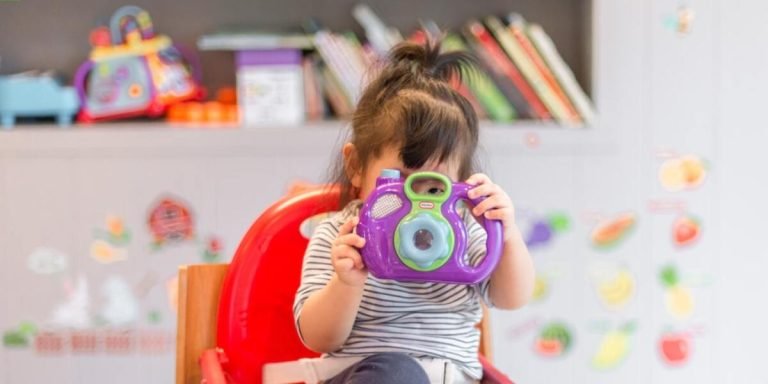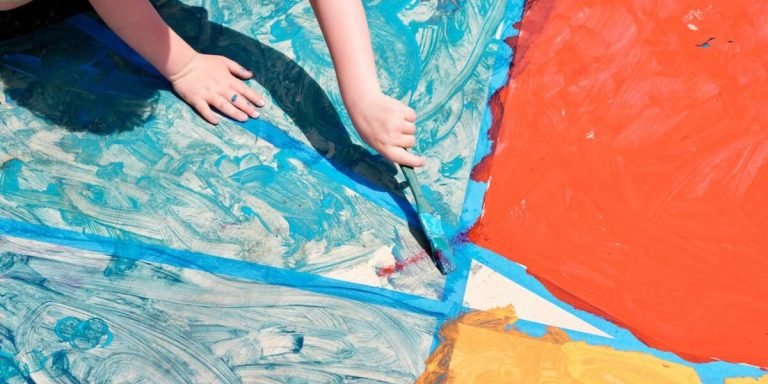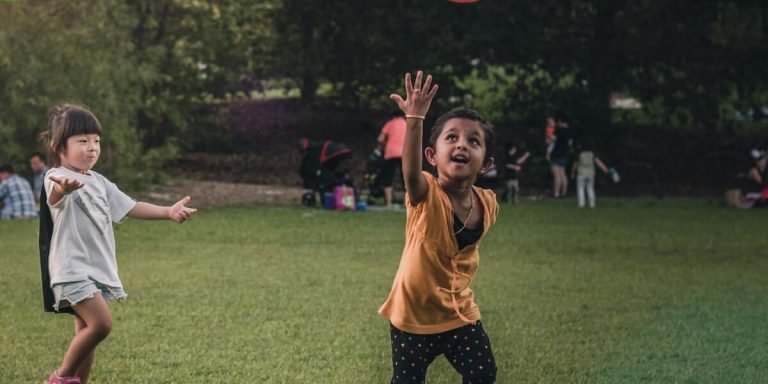Elementary Science Fair Ideas for an Exciting Learning Experience
Diving headfirst into the world of science can be an exhilarating and educational journey for young learners. The best way to kick-start this voyage is by participating in a project that interests them, such as those found at elementary science fairs. With an array of unique and stimulating elementary science fair ideas available, children have unlimited opportunities to explore new concepts while engaging their natural curiosity.
Learning by doing
“Learning by doing,” or activity-based learning, not only becomes more interactive but also enhances cognitive development more effectively than traditional rote methods. It makes abstract scientific principles tangible, turning complex theories into both accessible and enjoyable experiences for young learners. With well-structured guidance, teachers or parents can help choose the ideal elementary school science fair idea, potentially laying the groundwork for nurturing future scientists! Let’s explore some exciting opportunities that allow students to learn about a variety of topics including biology, physics, chemistry, and cosmology.
Did you know?
Did you know? The world’s youngest person to achieve nuclear fusion was just 14. This could serve as an inspiring story while discussing science fair ideas, encouraging kids towards scientific exploration!
Understanding the Basics of Activity-Based Learning in Elementary Science
This era of technology integration in education has revamped how we approach learning, particularly in elementary science. Activity-Based Learning (ABL) plays a pivotal role here by making experiential and interactive experiences the foundation. Prioritizing ABL for teaching basic scientific principles ensures students have an active involvement that extends beyond textbooks.
When it comes to nurturing curiosity in young minds through activity-based learning, developing innovative elementary science fair ideas is one effective method. By encouraging participation at such fairs, students get hands-on experience with creating projects based on their understanding of various scientific concepts. This not only reinforces theoretical lessons but also promotes critical thinking as they try to solve problems encountered during project creation.
Integrating technology aids these initiatives significantly; myriad digital tools are available today which can help fabricate more engaging and comprehensive science activities for children – from virtual simulations replicating natural phenomena to child-friendly coding platforms enabling them to build simple robotics or data models elucidating patterns.
Consideration is given even towards accessible technologies like smartphones – applications designed specifically for interactive STEM-oriented tasks serve just as efficiently when resources might be limited.
The Role of Hands-On Experiments
Activity-based learning, particularly in the realm of elementary science, can significantly enhance a child’s educational experience. The integration of technology has revolutionized this method and made it even more effective.
Hands-on experiments play an essential part when we talk about activity-based learning. They are not just fun and engaging but also introduce children to scientific concepts at their level. Implementing such activities in classrooms or homes is now easier than ever with accessible digital tools and platforms.
Let’s delve into how hands-on experiments foster better understanding:
1. Experiential Learning: One powerful way to implement activity-based learning is through experiential exercises that involve doing real-world experiments related to elementary science fair ideas, from building miniature volcanoes erupting baking soda lava to creating electric circuits using lemons!
2. Encourage Curiosity: Hands-on projects enable little scientists-to-be uncover the “why” behind several phenomena happening around them daily – fostering natural curiosity which fuels further exploration.
3. Tech Integration Boon: Introduction of virtual reality (VR) labs has transformed traditional laboratory practices allowing students do trial-error without risking accidents or ruling out space constraints; thus proving as a technological boon for 2023 education model.
4.Formation Of Scientific Temperament: These experimental activities contribute towards developing scientific temperament – cultivating analytical thinking & problem-solving capabilities among young learners.
Facilitating Critical Thinking Through Interactive Tasks
In the realm of elementary science education, facilitating critical thinking through interactive tasks forms the backbone. It is paramount to introduce certain methodology that can nurture young minds by incorporating technology in learning experiences that are rooted in real-world scenarios.
Activity-based learning has emerged as an efficient model for teaching and grasping concepts related to elementary science. This approach propels children beyond textbook knowledge, providing them hands-on experience which aids understanding more efficiently than traditional methods. When it comes to molding creative thinkers for tomorrow’s world, even common elementary science fair ideas take on a new light with activity-based learning.
One popular way of integrating this into everyday classroom activities is via technology platforms specially designed for educational purposes. For instance, digital simulations allow students to perform virtual experiments where they actively engage with their learnings rather than sitting idle spectators.
Such applications often incorporate gamification elements like rewards or points systems motivating learners further while also positively affecting cognitive engagement levels at school lessons centered around various elementary science fair ideas unfolded virtually including building your volcano!
This not only fosters practical skill sets but creates an environment wherein youngsters feel encouraged conduct explorations based upon what interests them without fear making mistakes along road discovery – something vital any aspiring scientist out there today 2023!
Designing Effective Elementary Science Fair Projects with ABL Principles
Children are naturally inquisitive, making the elementary years a great time to introduce them to scientific principles. This can be done effectively with well-designed science fair projects that incorporate Activity-Based Learning (ABL) methodologies. Today’s children, growing up in an era of revolutionary technological advancements, have unique opportunities for experiential learning and skill development through various tech-integrated academic activities.
When designing effective science fairs projects around ABL principles, it becomes essential to consider how technology plays a significant role. Incorporating digital tools or applications into these experiments not only piques student interest but also promotes deeper understanding and lasting knowledge acquisition. For instance, integrating augmented reality apps into botany or ecology-themed exhibits would allow students to manipulate virtual plants’ growth stages while grasling complex life-cycle concepts visually.
Applying STEM education approaches through Activity-Based Learning (ABL) enhances your child’s elementary school science project ideas. This method focuses on real-world problem-solving situations that incorporate technology. Children discover connections between different fields, like physics simulations on their tablets demonstrating gravity’s effects on various objects. Shifting from traditional rote-based education to engaging hands-on experiences builds future-ready skills from an early age.
Crafting Engaging Hypotheses and Experiments for Young Learners
Crafting engaging hypotheses and experiments can be an exciting part of elementary science fair ideas. Using ABL or Activity-Based Learning principles, children get hands-on experiences, fostering a profound understanding of scientific concepts. This integration often results in driving their curiosity and promoting active participation.
One fundamental way to employ ABL is by encouraging youngsters to question the world around them. Foster this curiosity into formulating fascinating ‘what if’ scenarios leading to intriguing hypotheses for science projects. For instance, what would happen if plants were watered with coffee instead of water?
Now that’s a question waiting for an experiment!
From there on, allow your young ones help design simple but insightful experiments based on these hypotheses like testing plant growth using different liquids – milk, coffee and water maybe?
To further enhance the learning experience during elementary science fair projects it’s integral to integrate technology appropriately when possible without losing sight of hands-on engagement crucial at this age group . In our plant example we could use smart sensors measuring soil moisture levels providing real-time data which kids can monitor over time adding another layer of practical tech-based learning.
Incorporating Real-World Scenarios into Project-Based Learning
Teachers today are continuously seeking innovative ways to make education engaging and relevant for their students. One of the finest methods is incorporating real-world scenarios into project-based learning, especially in designing effective elementary science fair projects with Activity-Based Learning (ABL) principles.
Imagine how exciting it would be if a student’s next science fair project was not simply an isolated academic task but connected directly with real-life situations! This kind of teaching strategy has been found to enhance understanding while also making lessons more appealing.
Plan your child’s or student’s elementary science fair ideas using the ABL approach combined with technology integration. Here are some helpful strategies:
1. Identify Real-World Problems: Start by pinpointing actual issues that kids can relate to at their level – maybe something they’ve noticed in the news, encountered on a family vacation or within local community problems like recycling systems etc.
2. Establish Goals & Objectives Based On The Identified Issue: Once you have picked out this problem point, define what success looks like for resolving it through a science experiment or model creation which will later become your major goal!
3. Integrate Technology Into Problem-Solving Process: With 2023 being highly tech-savvy era encouraging children from early stage about technology integration sounds so appropriate! Use cutting-edge digital tools such as online research platforms; advanced data analysis software and even interactive apps designed specifically for creating models/experiments digitally which gives realistic results too.
Assessing Student Progress with Activity-Based Methods in Science Education
In the dynamic era of 2023, activity-based methods in science education are playing an instrumental role to foster critical thinking and problem-solving abilities among elementary school students. One way for teachers and parents to assess student progress effectively is through integrating technology with engaging elementary science fair ideas. Technology integration not only fuels increased interest but also aids children’s comprehension about complex scientific concepts.
When executed well, Activity-Based Learning (ABL) can transform a conventional classroom setting into a vibrant learning environment where young minds are encouraged to explore, experiment and learn at their own pace. For instance, consider using simple tools like digital thermometers or heart monitor watches as part of biology experiments or generating solar power with miniature panels during physics lessons. These practical experiences will make abstract ideas more tangible for young learners while boosting their confidence in handling advanced instruments.
Additionally, keeping track of each learner’s progression is crucial which again shows the importance of technology integration in this field right now – various digital tools help educators conduct real-time assessments without interrupting teaching flow by providing analytics on individual performance metrics instantly. From online quizzes following interactive video sessions to data compilation from group assignments — all bases could be covered efficiently just by selecting appropriate tech resources aligning with your curriculum objectives and pupils’ needs.
Utilizing Reflective Observation for Measurable Outcomes
In the realm of science education, reflective observation plays a pivotal role in tracking student progress. This method harnesses the power of hands-on learning activities—from traditional elementary science fair ideas to high-tech experiments—enabling educators to assess understanding and skill development more accurately.
Reflective observation turns every activity into an opportunity for growth, fostering students’ intrinsic curiosity about scientific concepts. Integrate this approach with technology-enhanced learning methods to reap the following benefits:
Firstly, it facilitates real-world applications. Science is everywhere around us; having students observe their environment encourages them to connect what they learn in class with worldly phenomena naturally. For instance, mapping out constellations on a digital platform after studying astronomy could lead children towards knowledge consolidation through experience-based recognition.
Secondly, technology-based interactive tasks create strong engagement links between learners and study material. An app that simulates chemical reactions or virtual reality depicting dinosaur habitats are unique elementary science fair ideas providing immersive experiences beyond textbook confines which wouldn’t have been possible without technological integration.
Additionally , integrating technology fosters collaborative efforts within peer groups when working together designing websites , online presentations etc., making cooperative teamwork not just fun but also rewarding .
Enhancing Feedback Quality Through Active Experimentation
Incorporating activity-based learning practices in teaching elementary science can significantly amplify engagement and deepen understanding. For educators seeking innovative ways to assess student progress, integrating “elementary science fair ideas” into classroom curriculum becomes a game-changer.
Active experimentation aids learners’ cognitive development while simultaneously giving teachers constructive insights about their students’ academic growth. It’s an immersive approach that stimulates curiosity, fosters critical thinking skills, and encourages problem-solving attitudes among children.
For instance, when launching a mini rocket constructed with plastic bottles or observing the life cycle of butterflies in real-time; every hands-on experiment brings theory to life. These captivating experiences help young scholars connect abstract scientific concepts with practical applications through direct involvement.
Moreover, these methods promote student-centered learning where pupils take responsibility for their educational journey by setting goals based on personal interests- embracing autonomy over compliance. It’s not just rote-learning anymore; it’s active participation leading towards enlightened self-discovery!
Technology’s role adds an intriguing flavor here! Imagine if classrooms had access to virtual reality devices encompassing more complex experiments within reach? Or perhaps using fun mobile apps aligning engaging games with core STEM topics like coding lessons?
This fusion between technology integration in education and ‘activity-based’ methodology could revolutionize traditional pedagogical models making knowledge acquisition more dynamic than ever before!
Conclusion
Harnessing the power of elementary science fair ideas can transform an ordinary school day into a dynamic learning journey. With these simple yet ingenious ideas, your child’s curiosity will be piqued and their scientific acumen nurtured in fun-filled ways that blur the line between education and play.
We invite you to explore our website for even more insight on how to effectively navigate childhood education. Whether you’re a parent or educator, every page is packed with advice designed just for you – from expert tips on nurturing young minds to support resources crafted specifically for those championing early-years education at home or in formal settings. Unleash your educational potential today by browsing our platform!







